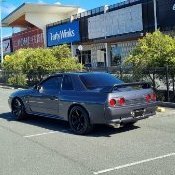Announcements
-
Similar Content
-
Latest Posts
-
By Chris_Guthrie · Posted
Also forgot to mention this but I've also noticed that my speedo doesn't move smoothly like normal and it's only sometimes but it's kind of Skippy, up, down, up a lot, down a little. Not sure if that makes a difference but thought I'd mention it just in case. -
By Watermouse · Posted
Cheers so much bro, I asked cause I remembered there being one or two wide bands that kept failing -
By Chris_Guthrie · Posted
Thanks guys that gives me at least a place to start tomorrow. I was debating on the consult cable but that solidifies it for me. Ran the ecu diagnostic and got a 55 figured nothing stored should mean okay but would really like to see the inputs when the issue is happening. I'll get that fuel Guage asap and will probably order an igniter but want to give it a check cold and hot to see if there's any difference. I really appreciate the quick replies and experience fellas -
https://au.gktech.com/products/s13-180sx-s14-s15-front-swaybar-end-links?_pos=18&_fid=c4372418b&_ss=c
-




Recommended Posts
Create an account or sign in to comment
You need to be a member in order to leave a comment
Create an account
Sign up for a new account in our community. It's easy!
Register a new accountSign in
Already have an account? Sign in here.
Sign In Now